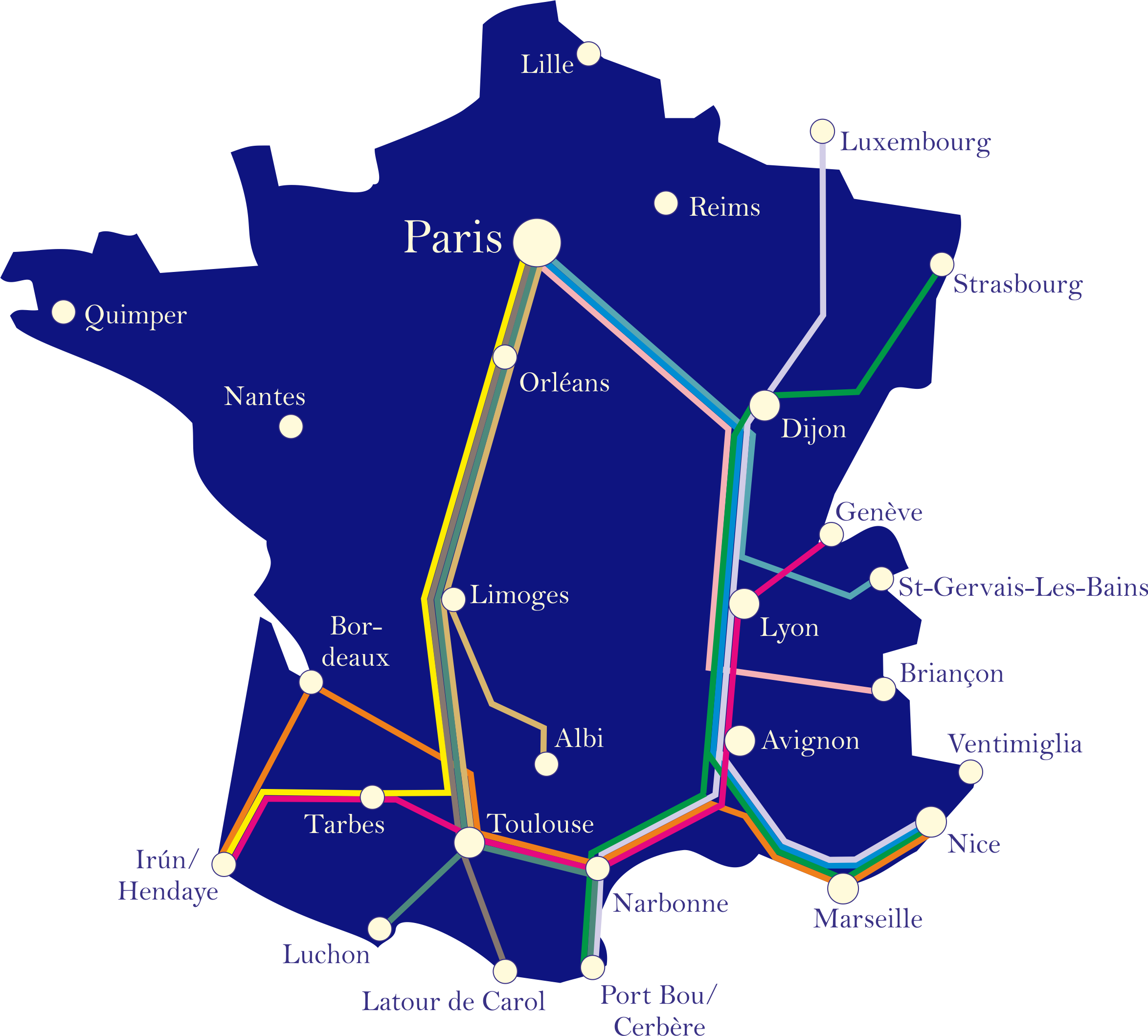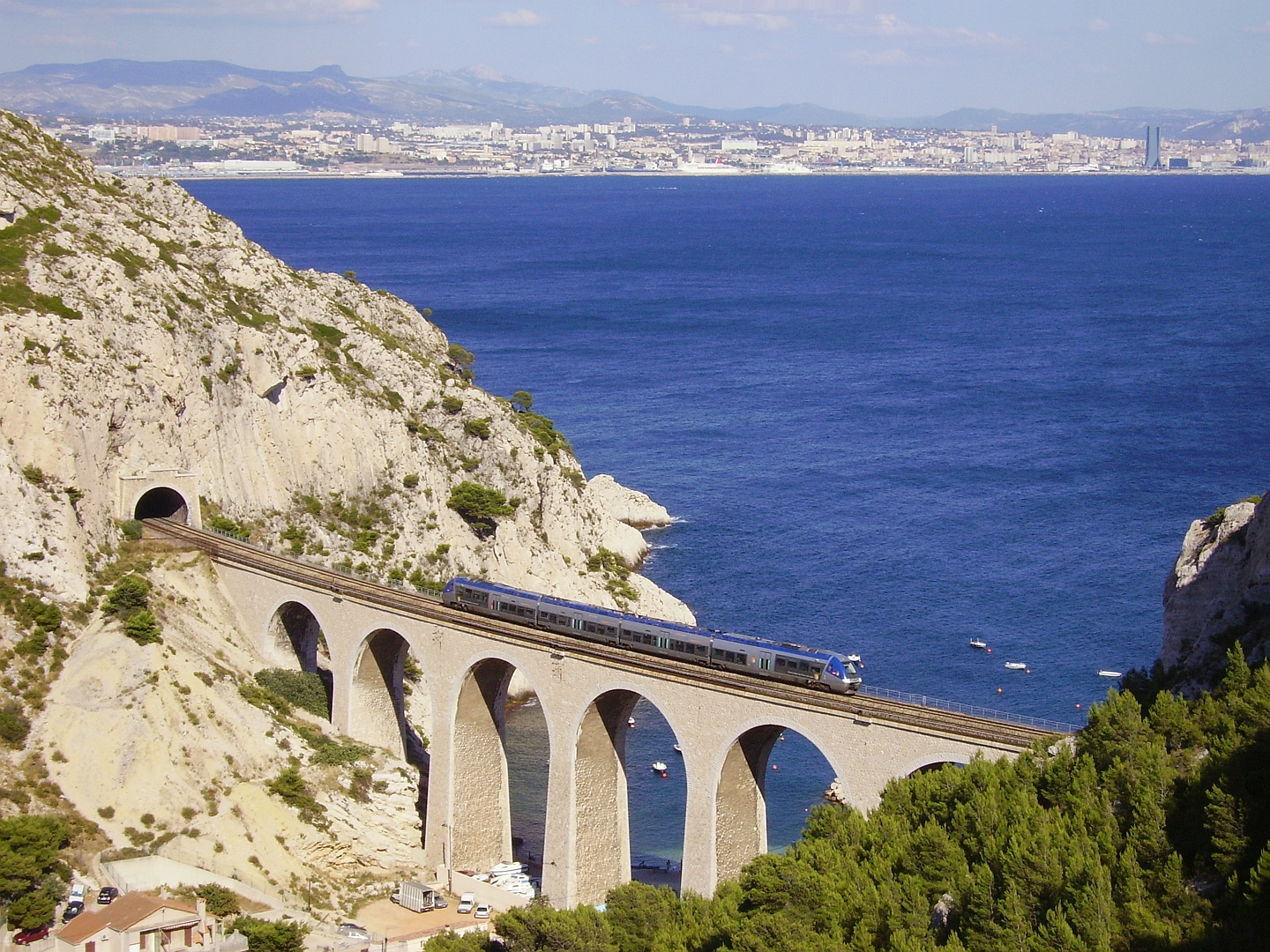|
Bayonne Station (Nouvelle-Aquitaine)
Bayonne station ( French: ''Gare de Bayonne'') is a railway station in Bayonne, Nouvelle-Aquitaine, France. The station is located on the Bordeaux - Irun, Toulouse–Bayonne and Bayonne–Saint-Jean-Pied-de-Port railway lines. The station is served by TGV (high speed trains), Intercités de Nuit (night trains), Intercités (long distance) and TER (local) services operated by the SNCF The Société nationale des chemins de fer français (; abbreviated as SNCF ; French for "National society of French railroads") is France's national state-owned railway company. Founded in 1938, it operates the country's national rail traffi .... Train services The following services currently call at Bayonne: *high speed services (''TGV'') Paris - Bordeaux - Hendaye *intercity services (''Intercités'') Hendaye - Bayonne - Pau - Tarbes - Toulouse *local service (TER Nouvelle-Aquitaine) Bordeaux - Dax - Bayonne - Hendaye *local service (TER Nouvelle-Aquitaine) Bayonne - Pau - Tarbes *local ... [...More Info...] [...Related Items...] OR: [Wikipedia] [Google] [Baidu] |
Bayonne
Bayonne (; eu, Baiona ; oc, label= Gascon, Baiona ; es, Bayona) is a city in Southwestern France near the Spanish border. It is a commune and one of two subprefectures in the Pyrénées-Atlantiques department, in the Nouvelle-Aquitaine region. Bayonne is located at the confluence of the Nive and Adour rivers in the northern part of the cultural region of the Basque Country. It is the seat of the Communauté d'agglomération du Pays Basque which roughly encompasses the western half of Pyrénées-Atlantiques, including the coastal city of Biarritz. This area also constitutes the southern part of Gascony, where the Aquitaine Basin joins the beginning of the Pre-Pyrenees. Together with nearby Anglet, Biarritz, Saint-Jean-de-Luz, as well as several smaller communes, Bayonne forms an urban area with 273,137 inhabitants at the 2018 census; 51,411 residents lived in the commune of Bayonne proper. [...More Info...] [...Related Items...] OR: [Wikipedia] [Google] [Baidu] |
Bordeaux–Irun Railway
The railway from Bordeaux to Irun is an important French 235-kilometre long railway line, that connects the southwestern city Bordeaux to northern Spain. The railway was opened in several stages between 1841 and 1864. Route The Bordeaux–Irun railway leaves the Bordeaux-Saint-Jean station in southwestern direction. The first approximately 145 km of its course runs through the Landes forest. At Lamothe the line to Arcachon branches off, and the line turns south. At Dax the line leaves the Landes forest, and the line to Puyoô and Pau branches off. The railway continues downstream along the right bank of the river Adour until Saubusse, where it turns west towards the Atlantic coast, and then south. It crosses the river Adour in Bayonne, and turns southwest. It passes along the ocean resorts Biarritz and Saint-Jean-de-Luz. It crosses the Spanish border between Hendaye and Irun, where the railway ends. France and Spain have different rail gauges (standard gauge and Iberian g ... [...More Info...] [...Related Items...] OR: [Wikipedia] [Google] [Baidu] |
Toulouse–Bayonne Railway
The railway from Toulouse to Bayonne is an important French 319-kilometre long railway line, that connects the southern city Toulouse to the southwestern town Bayonne, running along the foothills of the Pyrenees. The railway was opened in several stages between 1861 and 1867. Route The Toulouse–Bayonne railway leaves the Toulouse-Matabiau station in southern direction. It crosses the river Garonne south of Toulouse city centre, and follows the Garonne left bank upstream in southwestern direction. It crosses the Garonne twice near Saint-Martory, and turns west, still on the left Garonne bank. It crosses the Garonne again at Saint-Gaudens and at Montréjeau, where it leaves the Garonne valley. Beyond Lannemezan the railway turns northwest towards Tarbes, where it turns southwest towards Lourdes. At Lourdes it turns west again and starts following the Gave de Pau downstream, on its right bank. At Saint-Pé-de-Bigorre the river and the railway turn northwest towards Pau and Puyo� ... [...More Info...] [...Related Items...] OR: [Wikipedia] [Google] [Baidu] |
Bayonne–Saint-Jean-Pied-de-Port Railway
The Bayonne - Saint-Jean-Pied-de-Port railway is a French 52-kilometre long railway line, that connects the Bayonne to Saint-Jean-Pied-de-Port, running through the foothills of the Pyrenees. The railway was opened fully in 1898. Route The Bayonne - Saint-Jean-Pied-de-Port railway leaves the Bayonne station in a southerly direction. It crosses the river Adour south of Bayonne town centre, and then splits with the Toulouse-Bayonne railway and Bordeaux-Irun railway. It continues through valleys within the Pyrenees until it reaches Saint-Jean-Pied-de-Port station, its south-eastern terminus. History The line opened in 3 sections between 1891 and 1898 as follows: * Bayonne - Cambo-les-Bains on 19 January 1891 * Cambo-les-Bains - Ossès on 20 August 1892 * Ossès - Saint-Jean-Pied-de-Port on 11 December 1898 Between 1930 and 1931 the line was electrified to , however in May 2010 the line was de-electrified to reduce the costs of renewing the electrical equipment. As of 2014 no t ... [...More Info...] [...Related Items...] OR: [Wikipedia] [Google] [Baidu] |
SNCF
The Société nationale des chemins de fer français (; abbreviated as SNCF ; French for "National society of French railroads") is France's national state-owned railway company. Founded in 1938, it operates the country's national rail traffic along with Monaco, including the TGV, on France's high-speed rail network. Its functions include operation of railway services for passengers and freight (through its subsidiaries SNCF Voyageurs and Rail Logistics Europe), as well as maintenance and signalling of rail infrastructure (SNCF Réseau). The railway network consists of about of route, of which are high-speed lines and electrified. About 14,000 trains are operated daily. In 2010 the SNCF was ranked 22nd in France and 214th globally on the Fortune Global 500 list. It is the main business of the SNCF Group, which in 2020 had €30 billion of sales in 120 countries. The SNCF Group employs more than 275,000 employees in France and around the world. Since July 2013, the SNCF Grou ... [...More Info...] [...Related Items...] OR: [Wikipedia] [Google] [Baidu] |
French Language
French ( or ) is a Romance language of the Indo-European family. It descended from the Vulgar Latin of the Roman Empire, as did all Romance languages. French evolved from Gallo-Romance, the Latin spoken in Gaul, and more specifically in Northern Gaul. Its closest relatives are the other langues d'oïl—languages historically spoken in northern France and in southern Belgium, which French ( Francien) largely supplanted. French was also influenced by native Celtic languages of Northern Roman Gaul like Gallia Belgica and by the ( Germanic) Frankish language of the post-Roman Frankish invaders. Today, owing to France's past overseas expansion, there are numerous French-based creole languages, most notably Haitian Creole. A French-speaking person or nation may be referred to as Francophone in both English and French. French is an official language in 29 countries across multiple continents, most of which are members of the ''Organisation internationale de la Francophonie'' ... [...More Info...] [...Related Items...] OR: [Wikipedia] [Google] [Baidu] |
Nouvelle-Aquitaine
Nouvelle-Aquitaine (; oc, Nòva Aquitània or ; eu, Akitania Berria; Poitevin-Saintongeais: ''Novéle-Aguiéne'') is the largest administrative region in France, spanning the west and southwest of the mainland. The region was created by the territorial reform of French regions in 2014 through the merger of three regions: Aquitaine, Limousin and Poitou-Charentes. It covers – or of the country – and has 5,956,978 inhabitants (municipal population on 1 January 2017). The new region was established on 1 January 2016, following the regional elections in December 2015. It is the largest region in France by area (including overseas regions such as French Guiana), with a territory slightly larger than that of Austria. Its prefecture and largest city, Bordeaux, together with its suburbs and satellite cities, forms the seventh-largest metropolitan area of France, with 850,000 inhabitants. The region has 25 major urban areas, among which the most important after Bordeaux are ... [...More Info...] [...Related Items...] OR: [Wikipedia] [Google] [Baidu] |
Intercités De Nuit
Intercités de Nuit is a brand name used by France’s national railway company, SNCF, to denote overnight passenger rail services in France. It was known as ''Corail Lunéa'' before 2009 and as ''Lunéa'' from 2010 to 2012. Between 2013 and 2017, most services were cancelled due to budget cuts. Only four routes, from Paris to Briançon, Albi, Latour de Carol and Nice, were kept.SNCF Intercités, Lignes de nuit retrieved 16 November 2017 The brand has since been reintegrated into the main network. Network in 2022 As of 2022, the Intercités de Nuit network consisted of the following lines:[...More Info...] [...Related Items...] OR: [Wikipedia] [Google] [Baidu] |
Transport Express Régional
Transport express régional (, usually shortened to TER) is the brand name used by the SNCF, the French national railway company, to denote rail service run by the regional councils of France, specifically their organised transport authorities. The network serves French regions; Île-de-France (Transilien) and Corsica ( CFC) have their own specific transport systems. Every day, over 800,000 passengers are carried on 5,700 TER-branded trains.Le TER en 2030 ''SNCF'' Retrieved 2011-02-15 TER is part of , a branch of the SNCF dealing with urban and regional passenger rail, which also includes |
Railway Stations In Pyrénées-Atlantiques
Rail transport (also known as train transport) is a means of transport that transfers passengers and goods on wheeled vehicles running on rails, which are incorporated in tracks. In contrast to road transport, where the vehicles run on a prepared flat surface, rail vehicles (rolling stock) are directionally guided by the tracks on which they run. Tracks usually consist of steel rails, installed on sleepers (ties) set in ballast, on which the rolling stock, usually fitted with metal wheels, moves. Other variations are also possible, such as "slab track", in which the rails are fastened to a concrete foundation resting on a prepared subsurface. Rolling stock in a rail transport system generally encounters lower frictional resistance than rubber-tyred road vehicles, so passenger and freight cars (carriages and wagons) can be coupled into longer trains. The operation is carried out by a railway company, providing transport between train stations or freight customer facili ... [...More Info...] [...Related Items...] OR: [Wikipedia] [Google] [Baidu] |



